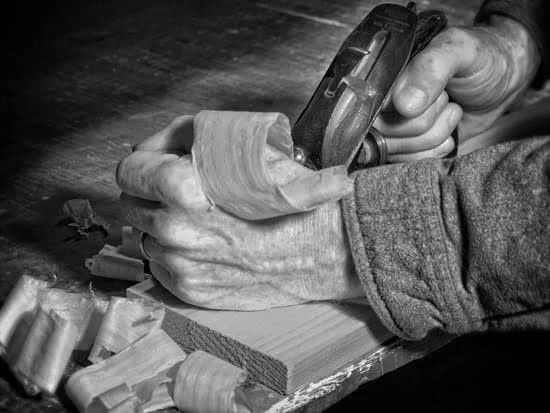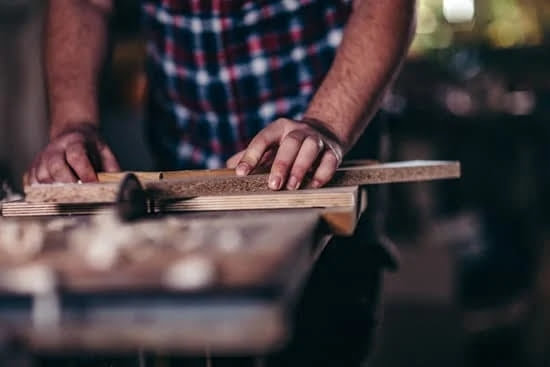Woodworking vise hardware plays a crucial role in woodworking projects, providing stability and control during various tasks. Whether you are a seasoned woodworker or just starting out, understanding the importance of woodworking vise hardware can greatly enhance your woodworking experience.
In this article, we will delve into the world of woodworking vise hardware, exploring its different types, factors to consider when choosing the right one for your projects, installation and setup instructions, maintenance tips for longevity, as well as troubleshooting common issues.
We will also showcase inspiring wooden projects that utilize various woodworking vise hardware, offering ideas to expand your craft. So let’s dive in and discover how quality woodworking vise hardware can ensure precision and success in your woodworking endeavors.
Different Types of Woodworking Vise Hardware
Woodworking vise hardware comes in various types, each designed to serve different purposes and accommodate different woodworking needs. Understanding the different types of woodworking vise hardware available is crucial for selecting the right one for your projects. Here is a comprehensive overview of the most common types:
- Bench Vises: Bench vises are the most commonly used type of woodworking vise hardware. They are mounted to a workbench and feature two jaws – one fixed and one movable. Bench vises are versatile and can be used for a wide range of woodworking tasks, including holding boards steady during cutting or shaping.
- Front Vises: Front vises, also known as face vises, are mounted on the front edge of a workbench and have a single movable jaw. They are ideal for clamping larger pieces of wood and offer excellent stability for heavy-duty tasks such as planing or jointing.
- Tail Vises: Tail vises are located at the end of a workbench and have a vertically sliding jaw that can be moved backward or forward to hold longer pieces of wood securely in place. This type of vise provides support along the entire length of the workpiece, making it perfect for working on longer boards.
- Moxon Vises: Moxon vises, also known as twin-screw vises, consist of two parallel screws that move in unison to tighten the jaws around the workpiece from above. These versatile vises can be easily adjusted to accommodate different thicknesses and are particularly useful for joinery tasks like dovetailing.
- Shoulder Vises: Shoulder vises resemble tail vises but have an additional brace that provides support for working with large panels or boards with thick edges. They allow woodworkers to securely clamp down stock while performing precision cuts or joinery.
When choosing woodworking vise hardware, it’s important to consider factors such as the type of projects you typically work on, the size of the workpieces you handle, and your personal preferences. Take into account the specific functionalities and features offered by each type of vise hardware to ensure it meets your needs effectively.
Choosing the Right Woodworking Vise Hardware for Your Projects
When it comes to woodworking projects, having the right woodworking vise hardware is crucial. The choice of woodworking vise hardware can greatly impact the success and precision of your woodworking projects. In this section, we will discuss the factors that you should consider when choosing the right woodworking vise hardware for your projects.
One of the first factors to consider is the type of project you will be working on. Different projects require different types of clamping and holding techniques.
For example, if you are working on small and delicate pieces, a bench vise with a smaller jaw size and soft jaws may be more suitable. On the other hand, if you are working on larger pieces that require a lot of force to hold securely, a heavy-duty vise with a larger jaw size and stronger clamping mechanism would be ideal.
Another factor to consider is the size of your workspace. If you have limited space in your workshop, a bench vise that can be easily mounted onto a workbench would be a practical choice. Alternatively, if you have ample space, you may opt for a larger standalone vise that can be placed directly onto the floor.
The material that you will be working with also plays a role in choosing the right woodworking vise hardware. If you primarily work with softer woods, such as pine or cedar, a standard cast iron or steel vise would suffice. However, if you often work with hardwoods like oak or maple, it may be worth investing in a higher quality vise made from materials like ductile iron or aluminum alloy that provide superior strength and durability.
By considering these factors – the type of project, size of workspace, and materials used – you can choose the right woodworking vise hardware that best meets your specific needs. This will ensure that your projects are held securely in place and allow for precise cuts and joinery. Ultimately, choosing the right woodworking vise hardware contributes to the overall success and quality of your woodworking projects.
Installing and Setting Up Woodworking Vise Hardware
Installing and setting up woodworking vise hardware is an essential step in any woodworking project. Whether you are a beginner or an experienced woodworker, having a properly installed vise can greatly enhance the efficiency and accuracy of your work. This section will provide a step-by-step guide on how to install and set up woodworking vise hardware.
Step 1: Choose the Right Vise
Before installing a woodworking vise, it is important to select the right one for your needs. Consider factors such as the size of your workbench, the type of work you will be doing, and the materials you will be working with. There are different types of vises available, including bench vises, shoulder vises, and tail vises. Choose one that best suits your specific requirements.
Step 2: Positioning the Vise
Once you have selected the appropriate vise, determine where you want it to be positioned on your workbench. It is recommended to install it near the edge of your bench for easy access and maneuverability. Ensure that there is enough space for the jaw to fully open and close without obstruction.
Step 3: Preparing Your Workbench
Before attaching the vise hardware, it is important to prepare your workbench. This may involve creating holes or slots for mounting screws or bolts, depending on the type of vise you have chosen. Take accurate measurements and mark these points on your workbench using a pencil or marker.
Step 4: Attaching the Hardware
Once your workbench is prepared, attach the vise hardware according to the manufacturer’s instructions. This may involve using screws, bolts, or other fasteners provided with the vise kit. Ensure that all attachments are securely tightened to prevent any movement or instability during use.
Step 5: Testing and Adjusting
After installation, test your vise by opening and closing it several times. Make any necessary adjustments to ensure smooth operation. You may need to lubricate the moving parts of the vise for optimal functionality.
By following these steps, you can successfully install and set up woodworking vise hardware on your workbench. This will provide a stable and secure holding mechanism for your projects, allowing you to work with precision and confidence.
Maintaining and Caring for Woodworking Vise Hardware
Woodworking vise hardware is an essential tool for any woodworker, and proper maintenance and care are crucial for ensuring its longevity and efficiency. By following a few simple tips, you can keep your woodworking vise hardware in optimal condition and extend its lifespan.
Firstly, it is important to regularly clean your woodworking vise hardware. Sawdust, dirt, and debris can accumulate over time, affecting the smooth movement of the vise. Use a brush or compressed air to remove any buildup from the jaws, screws, and other moving parts. Additionally, wiping down the surfaces with a clean cloth can help prevent rust or corrosion.
In addition to cleaning, lubricating the moving parts of your woodworking vise hardware is essential for maintaining its efficiency. Apply a light coat of lubricant to the screws, pivot points, and other areas that experience friction. This will help reduce wear and tear on the components and ensure smooth operation.
When not in use, it is advisable to store your woodworking vise hardware in a dry environment. Moisture can lead to rust or corrosion, which can severely impact its performance. Consider using a protective cover or storing it in a dedicated toolbox to prevent exposure to moisture.
Lastly, regular inspections are vital for identifying any potential issues with your woodworking vise hardware. Check for loose screws or bolts that may need tightening. Inspect the jaws for any signs of wear or damage and replace them if necessary. By addressing minor problems early on, you can avoid more extensive damage and costly repairs down the line.
Maintaining and caring for your woodworking vise hardware is essential not only for its longevity but also for ensuring precision in your projects. By keeping it clean, lubricated, properly stored, and performing regular inspections, you can enjoy efficient operation and accurate results every time.
| Tips | Importance |
|---|---|
| Clean regularly | Prevents buildup and ensures smooth movement |
| Lubricate moving parts | Reduces wear and tear, promotes efficiency |
| Store in a dry environment | Prevents rust and corrosion |
| Perform regular inspections | Identify and address potential issues early on |
Upgrading Your Woodworking Vise Hardware
New Innovative Features in Woodworking Vise Hardware
Woodworking vise hardware has come a long way, with manufacturers constantly innovating and introducing new features to enhance the woodworking experience. These innovative features not only make tasks easier but also improve precision and efficiency. Here are some of the latest advancements in woodworking vise hardware:
Quick-release Mechanisms
One of the most convenient upgrades in woodworking vise hardware is the quick-release mechanism. This feature allows users to quickly and easily adjust the position of the vise or remove workpieces without having to spend time manually adjusting screws or handles. With a simple lever or button, the vise can be opened or closed, making it ideal for situations where speed is crucial.
Rotating Jaws
Rotating jaws are another innovative feature that provides added flexibility when working on complex projects. These jaws can rotate 360 degrees, allowing woodworkers to clamp materials at different angles without readjusting the entire vise. Whether you’re working on irregularly shaped pieces or need precise angling, rotating jaws provide more versatility and convenience.
Built-in Measurement Systems
Accuracy is key in woodworking, and built-in measurement systems in vise hardware help ensure precise positioning of workpieces. Some woodworking vises now come equipped with ruler markings or laser guides that assist woodworkers in aligning their materials with utmost accuracy. These measurement systems eliminate guesswork and minimize errors, allowing for more professional and flawless results.
Enhance Your Woodworking Experience with Accessories
In addition to innovative features, there are also various accessories available that can enhance your woodworking experience when using vise hardware. These accessories offer improved functionality and convenience, catering to specific project needs. Here are a few popular accessories worth considering:
Vise Jaw Pads
Vise jaw pads are soft, non-marring inserts that can be attached to the vise jaws. They provide a cushioned surface for delicate or fragile materials, preventing damage and ensuring a secure grip. These pads are especially useful when working with hardwoods or when clamping finished pieces that need protection.
Spindle Handles
Spindle handles are an accessory designed to make adjusting the vise easier and more comfortable. They can be attached to the existing handle or screw, providing a larger grip area for better control. With spindle handles, you can exert more torque without straining your hand, making it effortless to tighten or loosen the vise.
Extension Plates
For projects that require additional workspace or support, extension plates can be attached to your woodworking vise. These plates increase the surface area of the vise jaws, allowing you to securely clamp larger materials or work on multiple pieces simultaneously. Extension plates are perfect for handling long boards or wide panels that may not fit within the standard dimensions of the vise.
By upgrading your woodworking vise hardware with these new features and accessories, you can elevate your woodworking experience to new heights. Whether it’s increasing efficiency, improving precision, or adding versatility, these advancements in woodworking vise hardware will undoubtedly enhance your overall craftsmanship and make your projects more enjoyable.
Common Issues with Woodworking Vise Hardware
Woodworking vise hardware, like any other equipment, can sometimes encounter common issues that may require troubleshooting. These issues can range from simple misalignments to more complex problems with the vise mechanism. This section will provide some common issues that woodworkers may face with their vise hardware and offer practical tips and solutions to address them.
One common issue that woodworkers may encounter is a misaligned vise jaw. This can occur when the vise jaws do not meet parallel to each other, causing uneven clamping pressure and affecting the accuracy of the workpiece. To troubleshoot this issue, start by loosening the mounting screws or bolts on the vise hardware.
Gently tap on the misaligned jaw with a mallet or hammer until it aligns properly with the opposing jaw. Once aligned, tighten the mounting screws or bolts securely.
Another issue woodworkers may face is a slipping or loose grip of their vise hardware. This can happen when the workpiece does not stay firmly in place during woodworking operations. A potential solution for this problem is to clean any debris or sawdust that might be present on the gripping surfaces of the vise jaws. Additionally, applying an adhesive-backed cork liner to these surfaces can improve grip and prevent slipping.
A third common issue woodworkers may experience is difficulty in operating their vise hardware due to excessive friction or stiffness in the mechanism. To address this issue, it is essential to lubricate all moving parts of the vise mechanism regularly using a suitable lubricant such as oil or silicone spray. It is important to avoid using excessive amounts of lubricant as it can attract dust and debris, negatively impacting performance.
By identifying and addressing these common issues with woodworking vise hardware promptly, woodworkers can maintain optimal functionality and ensure successful woodworking projects. Remember, regular inspection, maintenance, and troubleshooting are essential for keeping your woodworking vise hardware in top condition and achieving precise results in your craft.
Woodworking Vise Hardware Recommendations for Different Skill Levels
Woodworking vise hardware is an essential tool for woodworkers of all skill levels. Whether you are a beginner just starting out or an expert with years of experience, having the right woodworking vise hardware can greatly impact the success and precision of your projects. In this section, we will explore some recommendations for different skill levels to help you choose the best woodworking vise hardware for your needs.
Beginners
For those who are new to woodworking, it is important to choose woodworking vise hardware that is easy to use and provides stability and control. Consider starting with a beginner-friendly vise such as a bench vise or a front vise. These types of vises are typically easy to install and operate, making them ideal for beginners who are still getting familiar with woodworking techniques.
Intermediate
As you progress in your woodworking skills, you may want to consider upgrading to a more versatile and durable woodworking vise hardware. A good option for intermediate woodworkers is a quick-release vise or a tail vise. These types of vises offer quick adjustments and provide a secure hold on your workpiece, allowing for more precise cuts and shaping.
Expert
Expert woodworkers require woodworking vise hardware that can handle heavy-duty tasks and provide advanced features. For advanced woodworking projects, consider investing in a high-quality leg vise or shoulder vise. These vises offer strong clamping power and stability, allowing you to work on larger and more complex pieces with ease.
When choosing woodworking vise hardware, it is important to consider factors such as durability, size, grip strength, and overall construction quality. It is also helpful to read reviews from other woodworkers to get insight into the performance of different brands and models. Remember that the right choice of woodworking vise hardware can greatly enhance your woodworking experience by providing stability, control, and precision in your projects.
Showcasing Wooden Projects Utilizing Various Woodworking Vise Hardware
Woodworking vise hardware is an essential component in any woodworking project. It provides the necessary stability and clamping force to securely hold workpieces in place, allowing woodworkers to achieve precision and accuracy. In this section, we will showcase some wooden projects that utilize different types of woodworking vise hardware, providing inspiration and ideas to expand your craft.
Workbench with Front Vise
A workbench equipped with a front vise is a versatile and functional addition to any woodworking shop. This type of vise is mounted at the front edge of the workbench, allowing for easy access and a secure grip on workpieces. It is especially useful when working on larger or longer pieces of wood.
One project that showcases the use of a front vise is building a sturdy workbench with integrated storage compartments. This project involves using the front vise to hold down the workpiece while cutting joinery or planing surfaces. With proper positioning and tightening of the vise, woodworkers can ensure that their workpiece remains stable throughout the process, resulting in accurate and precise cuts.
Miter Saw Stand with Quick-Release Vises
For woodworkers who frequently use a miter saw, a miter saw stand with quick-release vises can greatly enhance their workflow efficiency. These vises are designed to quickly clamp down and release workpieces, allowing for fast adjustments and repetitive cuts.
A wooden project that showcases the use of quick-release vises is building a portable miter saw stand with adjustable support arms. The quick-release vises are strategically positioned on either side of the miter saw platform, enabling woodworkers to easily secure their workpieces in place before making precise crosscuts. The versatility provided by these vises allows for increased productivity and accuracy when working with angles and measurements.
Router Table with Bench Vises
A router table equipped with bench vises is an excellent addition to a woodworking shop, especially for those working on intricate joinery and shaping tasks. The bench vises provide a secure grip on the workpiece while allowing for precise adjustments and control.
A wooden project that highlights the use of bench vises is constructing a router table with built-in storage drawers. The bench vises are located on either side of the router table, providing stability and support for routing operations. Woodworkers can securely clamp their workpieces in place, allowing them to achieve accurate and clean cuts, grooves, and profiles.
By showcasing these wooden projects that utilize various types of woodworking vise hardware, woodworkers can gain inspiration and ideas to enhance their craft. Whether it’s building a workbench with a front vise, creating a miter saw stand with quick-release vises, or constructing a router table with bench vises, incorporating the right vise hardware can greatly improve precision and success in woodworking projects.
Conclusion
In conclusion, quality woodworking vise hardware plays a crucial role in ensuring precision and success in woodworking projects. The right vise hardware not only provides stability and security for your workpiece, but it also allows you to have better control over your materials. This leads to improved accuracy and efficiency in your craftsmanship.
Choosing the right woodworking vise hardware for your projects requires careful consideration of several factors. Firstly, you need to assess the size of your workbench and the type of projects you typically undertake. This will determine whether you need a front vise, end vise, or both. Additionally, considering the material and design of the hardware is essential to ensure durability and longevity.
Installing and setting up woodworking vise hardware may seem daunting at first, but following a step-by-step guide can make the process much easier. Proper installation is crucial for optimal functionality and performance. Once installed, regular maintenance and care are important for preserving the condition of your vise hardware and sustaining its efficiency.
Woodworking vise hardware is continually evolving, with innovative features and accessories being introduced to enhance user experience. Upgrading your vise hardware can provide added convenience or versatility to tackle different types of projects more effectively. It is worth exploring these upgrades as they can greatly improve your woodworking capabilities.
Frequently Asked Questions
What is the best wood for a woodworking vise?
The best wood for a woodworking vise would be one that is dense, durable, and resistant to warping or splitting. Hardwoods such as maple, oak, and beech are commonly used due to their strength and stability. Maple is particularly favored for its tight grain pattern and resistance to wear and tear.
Other woods like ash or birch can also be suitable choices depending on availability and personal preference. Ultimately, the key consideration should be selecting a wood that can withstand the pressure and tension exerted during woodworking operations while maintaining its shape and functionality over time.
What size vise do I need for woodworking?
The size of the vise needed for woodworking depends on several factors including the types of projects being undertaken, available workspace, and personal preference. For general woodworking tasks, a medium-sized vise with a jaw width ranging from 7 to 10 inches is often sufficient. This size provides enough clamping surface area to hold most workpieces securely without being overly cumbersome or requiring excessive force to operate.
However, larger vises with wider jaws may be necessary for handling larger workpieces or specialized projects such as furniture-making or timber framing. It is essential to consider both the dimensions of your typical workpieces and the available space in your workshop when determining the appropriate size vise.
What is the difference between a woodworking vise and a metal vice?
The main difference between a woodworking vise and a metal vice lies in their design and intended use. While both tools serve the purpose of holding objects firmly in place, they have distinct features tailored to their respective applications. A woodworking vise typically has jaws made of wood or other non-marring materials meant to grip delicate wooden pieces without damaging them during clamping. These vises often have larger clamping surfaces compared to metal vices since they are designed with woodworking projects in mind, accommodating different sizes and shapes of woodwork materials.
On the other hand, metal vises are specifically devised for tasks involving metals where a stronger grip is required. They typically feature hardened steel jaws that can withstand higher levels of pressure without deformation. Metal vises are commonly found in metalworking shops or garages where they are used to secure materials like steel bars, pipes, or sheet metal during cutting, shaping, or welding operations.

Hi everyone! I’m a woodworker and blogger, and this is my woodworking blog. In my blog, I share tips and tricks for woodworkers of all skill levels, as well as project ideas that you can try yourself.





